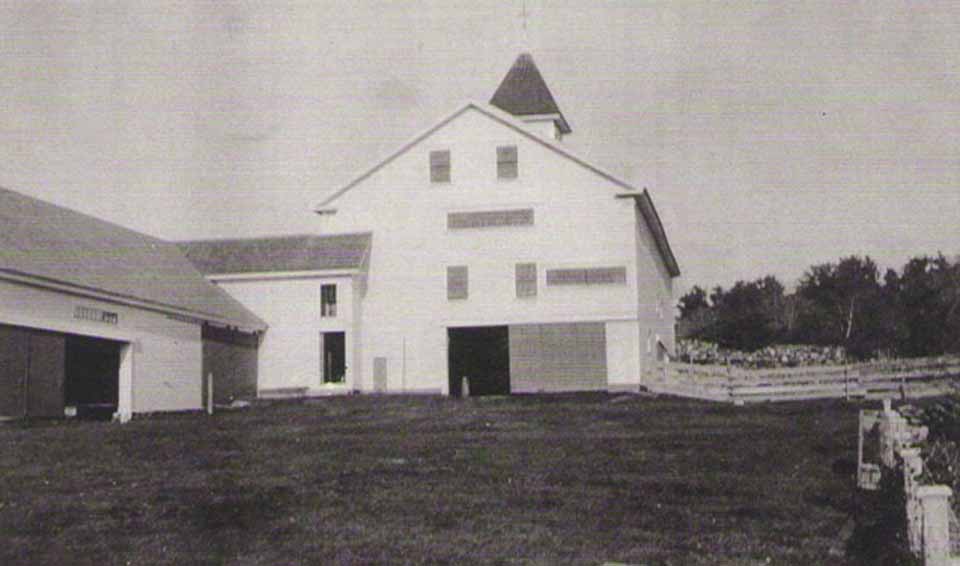History of Sanborn Mills Farm
A century and more ago, Sanborn Mills Farm was a bustling, thriving center of agricultural activities that supported an extended family and served the community. Today we have gathered a group of instructors, farmers, craftspeople, and historians dedicated to teaching the traditional skills that were commonplace then. We provide opportunities for people to learn old-fashioned ways and explore how they can be integrated into modern life. We believe that these skills and a vital connection to the land continue to be important and relevant. Come join us in this endeavor to preserve and build upon the legacy of those who came before us.

The Sanborns
In the 1770s John Sanborn (1747-1826) a surveyor by profession, moved west from Exeter and settled in Loudon. He served as a soldier in the Revolution, as a selectman and sealer of weights and measures in Loudon, and for a long time was the largest taxpayer in town. At one point in the evolution of the farm it comprised over 1,000 acres.
John’s son Edmund (1788-1880) built what we now know as Sanborn Mills Farm. He commissioned Penacook millwright Theodore Farnham Elliott to build the sawmill and grist mill which still exist (and who also married Edmund’s daughter Sally) in 1829-1830. The sawmill replaced an earlier building that was probably used to saw out the fender posts and beams (17” x 17”) for the new saw. During excavations to repair drainage that had silted in, original wooden water pipes from an original well to the house and barn were found deep underground, as well as stone covered trench to carry water under the house from the hill it was tucked into.
Edmund’s son James B. Sanborn married Mary Yeaw, and, when he inherited the farm, built the main house in 1875 and converted the Sanborn Barn, Horse Barn and Carriage Barn to the Greek revival style. According to family lore Mary Yeaw made a new, modern Victorian house a condition of her being willing to move to “rural” Loudon from Providence, RI. The ornate newel post in the central hill is an urban frill very unusual for a northern New England farm house. Some of the doors and windows in the kitchen ell appear to have been recycled from the original house, a cape, which reportedly stood on the same foundation as the current house.
John B. Sanborn was next in line. John was the last of the old time farmers to use century old farming and milling techniques, as the industrial revolution changed the country around him. Although there was a wind up telephone installed in the house during the 1920s, the house itself was not electrified until 1951. Water power and animal traction were his sole sources of power. John B.’s first wife died in a tragic accident and he married his neighbor up the road, Jennie Ring. John and Jennie had four children, one of whom, Bertha, died young, with their son Albin inheriting the farm after marrying Bernice Richardson. Albin’s sisters were banished from the farm by their sister-in-law and not allowed to come until one day in 1997 when Colin and Paula returned from an outing to find the two old ladies picking pears off the trees next to the dooryard. They turned out to be great friends and offered a wealth of information, much of which is included in Ruth King’s book Listen to the Crickets which she published when she was 100 years old.
Albin’s strength and stamina were legendary in town. Apparently he could stand and have a half hour conversation while holding a hundred pound sack of grain under each arm. He once got cornered by an angry bull while crossing the road to go to the sawmill and got the better of the bull by clobbering him with a handy nearby fence post. He also was a wily New Englander, once visiting the offices of the cannery in Pittsfield to ask for a load of silage to feed to his animals. “How much for a truckload?” he asked. The manager looked out the window at Albin’s pickup truck and gave him a price. Albin soon returned with the money and a much bigger dump truck, and insisted a deal was a deal.
After Albin’s death in 1972 Bernice and her son John shared the farm. When John died in 1995 and Bernice had to move to an assisted living facility in Pittsfield the farm was put up for sale. Colin and Paula Cabot bought the property in 1996 and moved to it from Milwaukee, Wisconsin on July 4, 1997.
